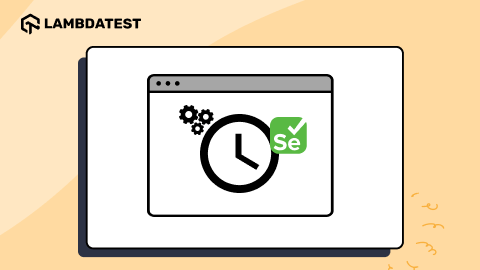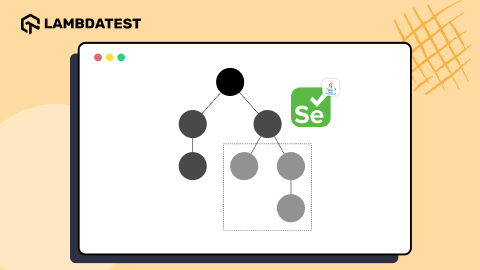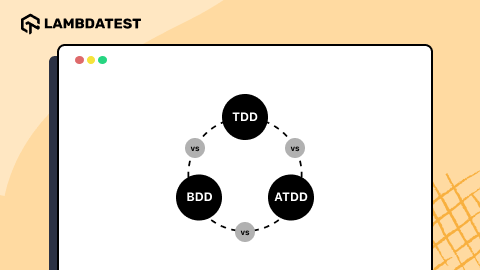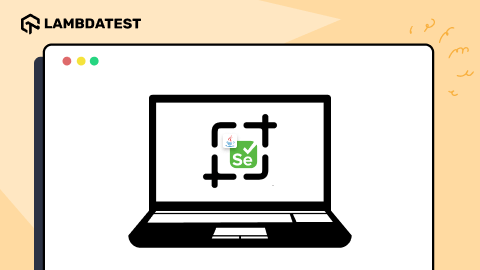End-to-End(E2E) vs Integration Testing: Key Differences
Ayush Mishra
Posted On: November 29, 2023
![]() 127032 Views
127032 Views
![]() 11 Min Read
11 Min Read
Selecting the appropriate testing approach is pivotal in developing any software project. The two well-known approaches that stand out are End-to-End and Integration testing, each with distinct advantages and goals.
End-to-end testing evaluates the entire application’s workflow, encompassing all systems and components, while integration testing focuses on the interactions between specific software modules or components to ensure they work together as intended.
TABLE OF CONTENTS
What is End-to-End Testing?
End-to-End testing, or E2E testing, is a software testing method that evaluates an application’s functionality and performance throughout, replicating actual user scenarios. End-to-end testing aims to validate the application’s functionality, reliability, performance, and security under real-world scenarios.
Objectives of End-to-End Testing
The primary objectives of End-to-End Testing are:
- Deep Evaluation of System Flow: E2E tests carefully evaluate the system flow, enabling a thorough analysis of all user interactions with the program.
- Ensure subsystems and layers are compatible: E2E testing verifies the seamless compatibility of various app components, including the user interface, API, and external systems within the complex app infrastructure.
Example of End-to-End Testing
To better understand how End-to-End testing works, we’ll look at an email application’s user journey.
End-to-end testing would involve the following steps to ensure the entire process works effectively.
- User Sign-In: It ensures successful sign-in and confirms the user’s profile information is displayed correctly.
- Compose and Send an Email: It ensures that the sent email appears in the sender’s ” Sent ” folder and in the receiver’s “Inbox” folder.
- Search and Access an Email: It confirms search results are accurate and ensures the selected email opens with the correct content.
- Apply Filters and Labels: It checks that emails are correctly filtered into designated folders and confirms labels are applied and visible.
- Log Out: It ensures successful logout and redirection to the login page. It is also essential to confirm at the end that attempting to access account-related pages without logging in is appropriately restricted.
This allows us to track the different touch points on the user’s journey and ensure that the application meets the expectations through end-to-end testing.
Advantages of End-to-End Testing
End-to-End testing (E2E) has several benefits and is essential to ensure the dependability and efficiency of software applications. Some of the main advantages of End-to-End testing are:-
- Robustness of Application: End-to-End testing validates an application across all its layers, including data, business rules, integration, and presentation, safeguards the application’s integrity, and ensures its correctness and robustness.
- Scalability: End-to-End testing assesses an application’s performance under high traffic volumes and handles increasing user loads effectively. It ensures a reliable and responsive user experience, even during peak usage of web apps.
- Security Assessment: End-to-End security assessment scrutinizes the application for potential vulnerabilities, analyzing authentication, encryption, authorization, and input validation. This involves attempting to inject malicious code or access password-protected areas during testing.
Disadvantages of End-to-End Testing
While End-to-End Testing is an essential step in software testing, several limitations must be considered. These limitations are:
- Complexity and Resource Intensiveness: Setting up and maintaining E2E tests can be difficult. They frequently call for particular setups, settings, and conditions. E2E tests often require dedicated computing resources and may lead to longer feedback loops, potentially slowing development cycles.
- Slower Execution Time: E2E tests, being thorough, take longer than integration testing. This may slow down Agile development and deployment. Delayed feedback can challenge adapting to evolving software needs, impacting the iterative process.
- Debugging Challenges: When an E2E test fails, pinpointing the exact cause or debugging can be challenging. It may take time to determine whether the issue lies in the application code, the test script, or the testing environment.
- Limited Parallelization: Limited parallelization is a drawback in End-to-End testing, where specific tests cannot run simultaneously due to dependencies or resource constraints. This can lead to slower testing cycles and potentially hinder rapid development processes. Race conditions and data isolation concerns further complicate parallel testing execution.
Are you curious about how to overcome slower execution time in testing? Consider reading The Importance of Test Execution Time and How Can We Speed it up?
 Note
NoteTo ensure your application never BREAKS, test it with an infrastructure that won’t break either. Try LambdaTest Today!
What is Integration Testing?
Integration testing is a type of software testing that verifies how individual modules work together to ensure proper functionality and identifies defects within a software application. The second stage of software testing occurs after unit testing and before system testing to test combined modules as a whole.
Objectives of Integration Testing
The primary objectives of integration testing revolve around ensuring the seamless interaction and functionality of integrated components within a software system. These objectives include:
- Verify Component Interactions: It checks for any problems with data flow, communication, and dependencies to ensure that integrated components or modules operate as intended together.
- Verify Data Exchange: It verifies that data is correctly exchanged across integrated units to avoid any information loss or corruption throughout the integration process.
- Identify Interface Defects: It looks for and fixes any issues with the communication protocols, APIs, or interfaces between connected components.
- Reduce Integration Risks: We can reduce the likelihood of significant flaws or failures by detecting and fixing integration-related problems early in the development.
Example of Integration Testing
Let’s revisit the email example and focus specifically on three components: authentication, data serving component, and email sender. We will now examine the integration testing process:
- Authentication and Data Serving Component: The correct credentials ensure the user can access the right data after authentication.
- Data Serving Component and Email Sender: Users can send emails using the chosen contacts and access them in the “Sent” folder once they have been sent.
- Authentication and Email Sender: Authentication is required before any email-sending operations can be performed.
Integration testing involves testing the interactions between different components/interfaces of the system to ensure that they work together as expected.
Advantages of Integration Testing
Integration testing ensures a software system’s reliable and seamless operation and delivers various important benefits. These include:
- Module Integration: Integration testing verifies that a software application’s integrated modules or components work correctly together as expected.
- Finding Early Bug: Integration testing identifies bugs related to irregular data exchange between components, interoperability problems, and incompatible interfaces early in development.
- Reduces Cost: Fixing integration bugs is less expensive than fixing production bugs. Thus, investing funds in integration testing lowers overall expenses.
Disadvantages of Integration Testing
While the integration testing phase of software development is essential, some limitations must be considered. These limitations consist of:
- Limited visibility: Integration testing may not uncover certain performance, scalability, or security issues better addressed by other testing methods like performance testing and security testing.
- Complexity with Third-Party Integration: When integrating with third-party systems, we don’t have control over changes made by the third party. This can lead to compatibility issues or unexpected behavior during integration.
Key Differences Between End-to-End Testing vs Integration Testing
This section will show the difference between End-to-End Testing vs Integration Testing.
| Factor | End-to-End Testing | Integration Testing |
| Scope | It covers the entire system workflow. | Focuses on the interactions between integrated components. |
| Purpose | Validates the entire workflow from start to finish. | Verifies the interactions and data flow between integrated modules. |
| Testing Level | Performed after unit and integration testing. | Performed after unit testing and before system testing. |
| Testing Components | Involves testing the complete system, including databases, APIs, and UI. | Concentrates on the communication and data exchange between individual units. |
| Complexity | It is more complex, involving multiple components and interactions. | Less complex as it deals with isolated interactions. |
| Dependency Management | It validates data integrity and flow. | It identifies interface issues and dependencies. |
| Execution Time | Takes more time to execute due to its comprehensive nature. | Faster as it targets specific interactions. |
| Resources Needed | It requires more resources due to its comprehensive nature. | It requires less resources compared to End-to-End Testing. |
How End-to-End and Integration Testing Work Hand in Hand
End-to-End and Integration Testing are complementary steps in the software testing process:
- Progressive Testing: Integration testing concerns how integrated components interact, validating data flow and dependencies. End-to-End testing ensures the complete application flow functions without a hitch after validating integration.
- Comprehensive Verification: They offer complete protection when combined. While End-to-End Testing verifies the full user experience, Integration Testing ensures that components communicate and work together.
- Effective Debugging: Integration Testing identifies integration-related issues, facilitating effective debugging. Conversely, End-to-End testing finds problems across a broader range of user activities.
- Risk Reduction: Integrating testing before End-to-End testing allows for the early resolution of any integration problems, reducing the risk of significant flaws.
How LambdaTest Enable Enterprises To Achieve End-to-End(E2E) Testing?
LambdaTest is a test orchestration and execution platform for accelerating automation testing and release pipelines. At the core of LambdaTest’s offerings is a vast real device cloud, hosting over 3000 real browsers and devices and providing a robust environment for cross browser testing.
Furthermore, LambdaTest boasts a reliable and highly scalable cloud Selenium grid that will enable you to run End-to-End(E2E) automation tests seamlessly across real browsers and devices.
Moreover, LambdaTest integrates with leading CI/CD tools, streamlining testing processes for Quality Assurance (QA) professionals and developers alike to improve the efficiency of E2E testing.
Conclusion
The decision between End-to-End Testing vs Integration Testing depends on many factors. End-to-End testing thoroughly assesses the complete application flow, assuring a flawless user experience. While focusing on the interactions between linked components, integration testing verifies data flow and dependencies.
Ultimately, the choice will be made based on the project’s specifications. While End-to-End Testing may be sufficient for smaller, less complex projects, Integration Testing’s incremental methodology may be more advantageous for bigger, more complex systems.
Frequently Asked Questions (FAQs)
Is it possible to perform Integration Testing without conducting unit testing first?
It is feasible but not advised. Unit testing must be done initially to ensure each component operates appropriately. Complement-level errors may go undetected by skipping unit tests, making integration testing less helpful in locating and resolving integration problems.
Which tool is used for End-to-End testing?
LambdaTest(test orchestration and execution platform), Selenium, Cypress, and TestCafe are popular tools for end-to-end testing. When selecting a tool, prioritize factors such as test coverage, ease of use, compatibility, and scalability.
How does End-to-End Testing contribute to user acceptance testing (UAT)?
End-to-end testing ensures that the entire system works without a hitch. As a result, UAT participants can trust the system’s dependability, knowing that its main functionalities are operating as intended. E2E testing lays the groundwork for UAT, making user validation of the product easier and more efficient.
Can automated testing tools be used for Integration and End-to-End Testing?
Yes, both integration testing and End-to-End testing can be done with automated testing technologies. Selenium, Cypress, and Postman are a few examples of tools that offer testing at many levels, making them adaptable for diverse testing requirements along the software development process.
Got Questions? Drop them on LambdaTest Community. Visit now












